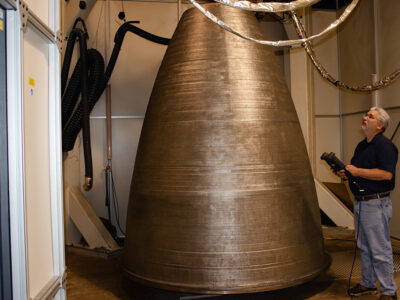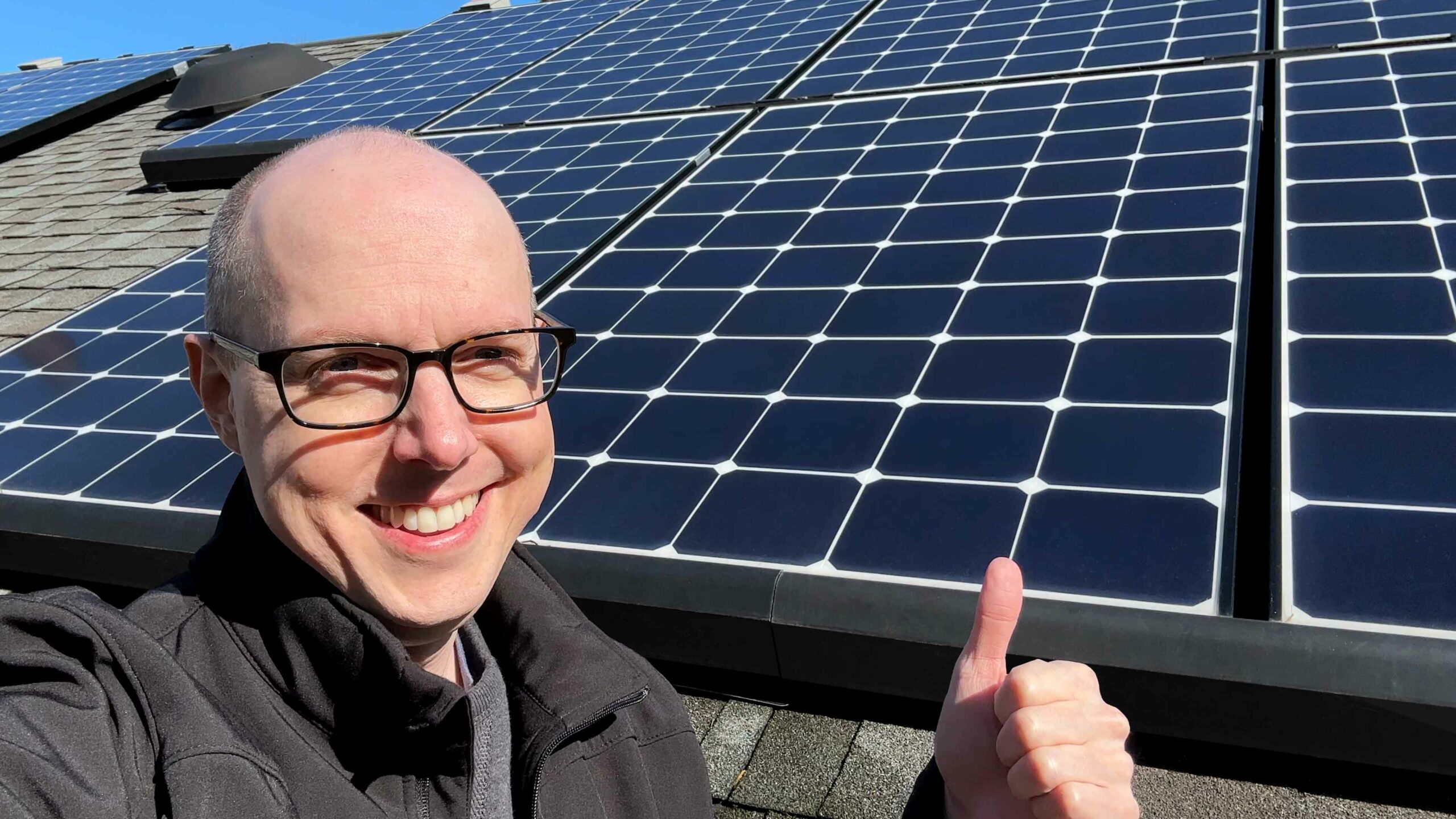If you’re watching this video, that means you have an internet connection, although you may live in an area with limited providers or network speeds. Still having internet accessibility can improve everything from entertainment, to work, to education, and health care. But 41.3% of the world doesn’t have access to the internet… at all.1 And that’s where SpaceX comes in with Starlink, which is getting very close to launching their service. What is it, what are the latest developments, and why should you care?
So as I mentioned, internet access isn’t ubiquitous. Just over 40% of the world doesn’t have any access to the internet yet, and even in areas with access it can be spotty if you’re not in more urban areas. Places like Africa, the Middle East, and Asia are lagging behind areas like North America and Europe.2 Laying long cable runs into remote regions can be costly given the number of potential customers. Even building out wireless signals in those areas is costly, which is why there are still many low bandwidth areas or places with no signal at all in the United States. While 96% of urban areas have access to broadband, only about 61% of rural areas do.3
Satellite internet service solves some of that problem because you can cover large areas with a single satellite, but there are some big downsides.
Current satellite-based internet services are using geostationary satellite’s that are orbiting over 35,000 km (22,000 mi) above the surface of the earth.4 It’s that distance that creates the first major problem: latency. A radio signal takes about 120 ms to reach a geostationary satellite, with another 120 ms to relay that signal back down to the ground. So in theory you’d be looking at at least 240 ms, but in practice you often see a round-trip latency between 400 – 600 ms. 12 times slower than what you see on the ground. And then you have the challenge of how much bandwidth a single satellite can handle at once, which can affect the download and upload speeds for everyone sharing that satellite. That means your maximum upload and download speeds will most likely be on the lower side, and you’ll have some data caps to contend with each month. Viasat and HugesNet are two of the options you have today and cost between $30-$150/month for speeds between 12-100 Mbps.5 And Viasat’s current throughput in their satellites is about 260Gbps, which is shared by everyone using it.
What this means is that there’s an opening for competition, and that’s where SpaceX comes in with Starlink. Since we already have satellite internet, what makes Starlink different? It’s a low earth orbit (LOE) constellation of satellites that operate around 1/3 to over 1/100 the height of geostationary satellites. As of April 22, 2020, there are 422 satellites in the Starlink constellation so far, with most of them deployed at around 550 km (340 mi) above the surface. They’re trying to launch 60 satellites per Falcon 9 flight for a total of around 4,400 satellites in phase 1. And they’ll add another 7,500 in phase 2. So around the year 2027 they’ll have nearly 12,000 satellites deployed in three orbital shells.6 Now it’s not guaranteed, but SpaceX has also submitted paperwork for an additional 30,000 satellites beyond that.7
Why so many satellites? Low earth orbit satellites, being much closer to the earth, means they can’t be stationary. They have to move faster to maintain their orbit, and they also have a smaller cone of coverage. But a big benefit of being so much closer is a much lower latency for communication. It will have latencies around 25-35ms, which makes it comparable to cable and fiber optic networks. However, when using lasers to communicate between satellites, which Starlink will eventually do, it gets a little physics boost. Light travels through a vacuum about 47% faster than through glass, like a fiber optic cable.8 So even when accounting for transmitting from the planet and back, the faster laser transmission speeds between satellites will give the network a latency edge compared to long stretches of fiber on earth. And each satellite will be able to handle 1 Tbps, which is almost 4 times the capacity of Viasat.9 That’s roughly 40,000 people streaming 4K video at once.
While all of that sounds incredible, this isn’t a service that’s meant to knock out terrestrial internet service. It’s a service meant for a smaller segment of the market, which is primarily areas less densely populated. Just this past March, Elon talked about that at the Satellite 2020 conference.
”And the challenge for anything that is space-based is that the size of the cell is gigantic. It’s great for very low to maybe medium sparsity situations, but it’s not good for high density situations. We’ll have some small number of customers in L.A., but we can’t do a lot of customers in L.A. because the bandwidth per cell is simply not high enough.” -Elon Musk10
With tens of thousands of satellites being put into orbit, it’s going to dwarf everything that’s come before. At this point in our history, we’ve only launched about 9,000 objects into space.11 And of those a little less than 6,000 are still in use today. SpaceX is going triple that number in 5 to 7 years. And if they move forward with the additional 30,000, you can probably understand why a lot of people are concerned about overcrowding and space debris. If you’ve ever seen the movie Gravity, then you probably know about Kessler syndrome.12 It’s the theory that an object colliding with another in a densely packed area of space could cause a cascade of destruction.
The FCC required very strict plans from SpaceX to mitigate space debris, which meant achieving a higher level of de-orbiting reliability than NASA uses for itself: 90% of satellites reliably de-orbiting. With a targeted lifespan of 5-7 years, SpaceX told the FCC that it will “implement an operations plan for the orderly de-orbit of satellites nearing the end of their useful lives at a rate far faster than is required under international standards.” And that SpaceX satellites “will de-orbit by propulsively moving to a disposal orbit from which they will reenter the Earth’s atmosphere within approximately one year after completion of their mission.”13 About 95 percent of the satellites’ parts will disintegrate in the Earth’s atmosphere as they de-orbit.14
There’s also been concerns about the impact on astronomical observations.15 With the satellites being very visible when deployed, and also noticeable as they’re reaching their final orbit, astronomers are worried about the light pollution. SpaceX has been working with astronomers to address these concerns with strategies like painting sections of the newer satellites black to reduce reflection. Or adjusting their orbit orientation to minimize how the satellite will catch and reflect sunlight towards the surface during their orbit. And even adding a sun shade to the satellite to help block reflections. They’re calling it VisorSat.16 There’s still a lot of outstanding questions around how this will ultimately impact visual and radio telescope observations, but SpaceX is actively trying to address them.
SpaceX isn’t the only company working on low earth orbit constellations for internet service. Companies like Telesat17, Oneweb, and Amazon all have plans, but nobody has successfully launched a business out of this. Amazon is working on Project Kuiper, which will have around 3,200 satellites18, but has yet to put any satellites into orbit.19 And OneWeb, which launched 74 satellites, just filed for bankruptcy in March of 2020.20
”Guess how many LEO constellations didn’t go bankrupt. Zero. Zero. Iridium is doing okay now, but Iridium 1 went bankrupt. Worldcom went bankrupt. Globalstar, bankrupt. Teledesic, bankrupt. Am I leaving anyone out? There’s a bunch of others that didn’t get very far … and they all went bankrupt. Anyway, they all went bankrupt.” -Elon Musk “So you’re focusing on making it work first?” -Jeffrey Hill “Not bankrupt.” -Elon Musk21
There’s a big business opportunity for the company that can get up and running first, which is looking like SpaceX. In 2018 they estimated the total cost to be about $10B, which is a lofty price tag for a company that’s expected to make around $3B – $5B a year from launches by 2025. The projections for yearly revenue from Starlink are $30-$50B a year by 2025.22 But that’s a means to an end for Elon and SpaceX. In a media call before the launch of the first Starlink satellites Elon said:
”We see this as a way for SpaceX to generate revenue that can be used to develop more and more advanced rockets and spaceships. We believe we can use the revenue from Starlink to fund Starship.” -Elon Musk23
Which leads right into the goal for becoming a multi planetary species.
”There are really two fundamental paths history is going to birfricate along two directions. One path is we stay on earth forever, and then there will be an eventual extinction event. I don’t have an immediate doomsday prophecy, but eventually history suggests that there will be a doomsday event. The alternative is to become a space faring civilization and a multi-lantern species, which I hope you agree that is the right way to go. Yes? That’s what we want. (Points at Mars)” Elon Musk24
Back to earth, we’re not going to have to wait too much longer before seeing Starlink in action. The private beta service is scheduled to start in the northern US and Canada around August 2020, with a public beta following that up in November 2020. Part of the reason for the limited scope is due to where the current satellites are orbiting. As more satellites join the constellation, we’ll see more areas rolled into the beta program. It’s going to be interesting to see how well the system performs over the next year or two, and what opportunities it opens up for mobility, internet access, and other businesses. Areas that have no or poor internet availability will benefit the most from Starlink, but so will areas with a lack of competition. And if it proves to be as low latency as promised, it could be a huge moneymaker for high frequency stock traders. It’s not just gamers that benefit from low latency. Starlink’s projected 25-35 ms latency is faster than anything stock traders have today between major trading centers in the US and Europe.25 In businesses where every millisecond counts, Starlink could mean big business.
1: http://www.internetworldstats.com/stats.htm
2: http://ourworldindata.org/internet
3: http://theconversation.com/reaching-rural-america-with-broadband-internet-service-82488
4: http://en.wikipedia.org/wiki/Satellite_Internet_access
5: http://www.reviews.org/internet-service/best-satellite-internet-providers/
6: http://en.wikipedia.org/wiki/Starlink
7: http://spacenews.com/spacex-submits-paperwork-for-30000-more-starlink-satellites/
8: http://micro.magnet.fsu.edu/primer/java/speedoflight/index.html
9: http://nocable.org/news/elon-must-revolutionizing-internet-with-his-starlink-service
10: http://www.youtube.com/watch?v=HPV8Xp3pEpI
11: http://www.unoosa.org/oosa/osoindex/search-ng.jspx?lf_id=
12: http://en.wikipedia.org/wiki/Kessler_syndrome
14: http://www.vox.com/science-and-health/2020/1/7/21003272/space-x-starlink-astronomy-light-pollution
15: http://www.vox.com/science-and-health/2020/1/7/21003272/space-x-starlink-astronomy-light-pollution
16: http://www.tesmanian.com/blogs/tesmanian-blog/astro-2020
18: http://www.geekwire.com/2019/amazon-project-kuiper-broadband-satellite/
21: http://www.youtube.com/watch?v=HPV8Xp3pEpI

















Comments